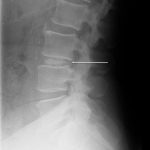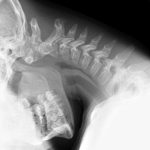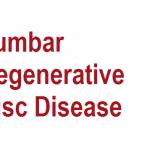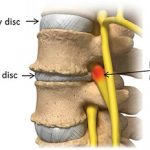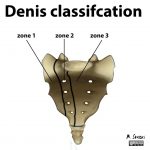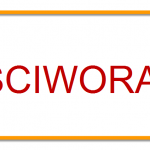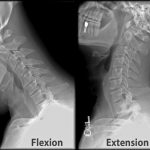Intervertebral disc calcification is more common in adults than children. Overall, it is an uncommon condition. It was first described by Baron in 1924 and since that time more than 100 cases have been reported. Intervertebral disc calcification is more common in boys than girls and usual age of presentation is 8-13 years. It is […]
Spine
Os odontoideum Presentation and Treatment
Os odontoideum is an anomaly where the tip of the odontoid process is divided by a wide transverse gap. This leaves the apical segment without its basilar support. the odontoid process or dens is separated from the body of the axis. Odontoid process is part of axis [name of the second vertebra] in a normal […]
Lumbar Degenerative Disc Disease
Lumbar degenerative disc disease refers to a condition in which a compromised or degenerative disc in lumbar spine causes low back pain. Lumbar degenerative disc disease is quite common. At least 30% of people aged 30-50 years old are estimated to have some degree of disc space degeneration. All patients with the degenerated disc are […]
Degenerative Disc Disease – Symptoms and Treatment
Degenerative disc disease is one of the most common causes of low back pain and neck pain. Degenerative disc disease describes the symptoms of pain and possibly radiating weakness or numbness stemming from a degenerated disc in the spine. The process is also termed as degenerative disc disorder. Degenerative disc disease can greatly affect the […]
Sacral Fractures – Presentation and Treatment
Sacral fractures are common in pelvic injuries and associated with 30-45% cases. About a quarter of sacral fractures are associated with neurologic injury. Sacral fractures are missed quite often, as often as 75% in patients without a neurological deficit and about half of those with the deficit. Neurologic injury associated with sacral fractures can range […]
Posttraumatic Spinal Cord Injury without Radiographic Abnormality or SCIWORA
SCIWORA syndrome stands for spinal cord injury without radiographic abnormality. Spinal cord injury without radiographic abnormality or SCIWORA is an injury in the cervical [most common] or thoracic spine, in the absence of identifiable bony or ligamentous injury on radiographs or computed tomography. That means there is an injury to the cervical spine, but the […]
Lower Back Pain – Causes and Treatment
Lower back pain can result from muscles and tendons of the back, nerve roots, joints of spine and viscera. Few of these lower back pain are acute whereas others are chronic in nature. The symptoms and severity of lower back pain vary greatly. What is seemingly a simple symptom may in fact point to a […]
Reactive Arthritis or Reiter Syndrome
Reactive arthritis is an autoimmune disease that develops in response to genitourinary or gastrointestinal infection or a preceding Chlamydia respiratory infection. Reactive arthritis is frequently associated with the HLA B27 histocompatibility antigen but its role in the disease is not fully defined. Mechanism of development of reactive arthritis is not known but antigens are known […]
Cervical Spondylotic Myelopathy Symptoms & Treatment
Cervical spondylotic myelopathy refers to cervical spinal cord compression secondary to degenerative changes within the cervical spine. Degenerative changes in the cervical spine are called cervical spondylosis. In advanced stages, cervical spondylosis can cause compression of the spinal cord and produce symptoms like which often develop insidiously and are characterized by neck stiffness, arm pain, […]
Range of Motion of Cervical Spine
Cervical spine movements are complex and result of individual vertebral motion. There are six movements possible in the normal range of motion of the cervical spine. These are Flexion A movement by which chin attempts to touch the chest. Extension A movement in the opposite direction of flexion Lateral Flexion This movement allows you to […]
